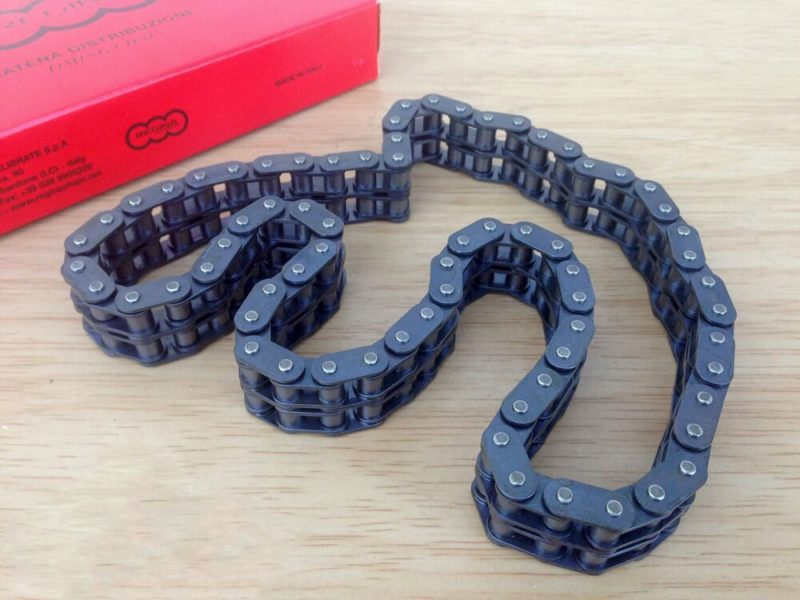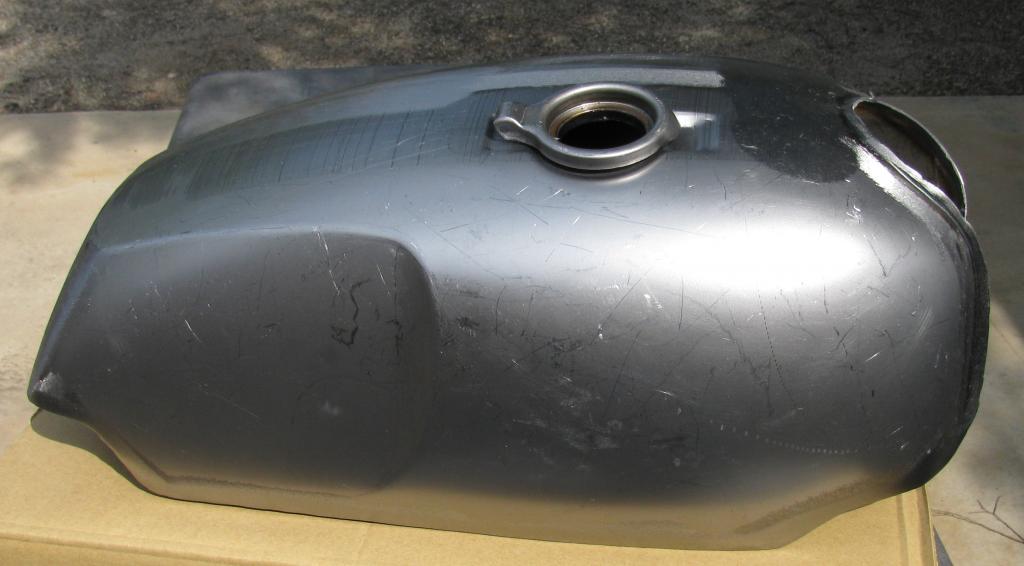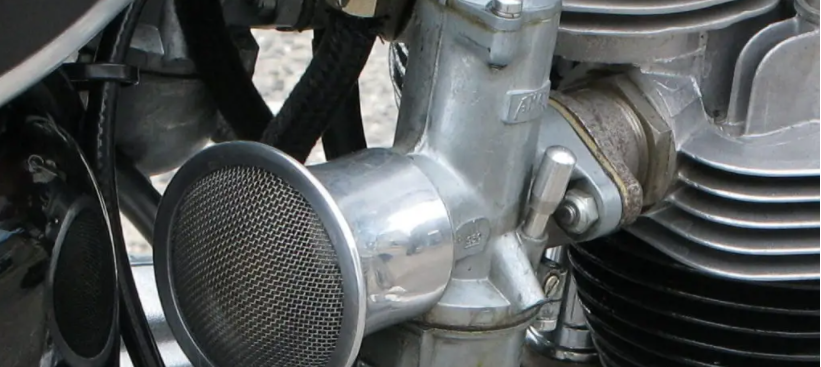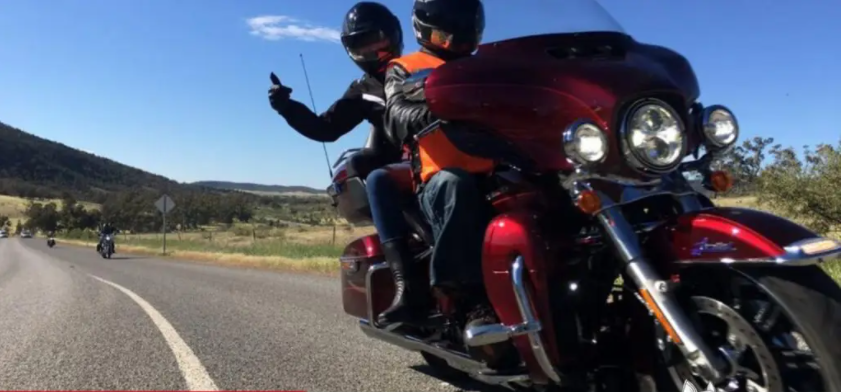The motorcycle is the favorite means of transport for many people. This status has been achieved thanks to a series of advantages that make it unique since it allows you to save money and time on your trips (especially if we talk about the city). In addition, the motorcycle is a motor vehicle that uses less gasoline, the maintenance is much cheaper than that of a car, in addition to the feeling of freedom and agility that it transmits when driving.
Today we want to review the motorcycle and its components. Ideal for those who are entering the world of two wheels for the first time and want to know and identify the parts of their motorcycle. We will try to explain some basic concepts for beginners in which we will show the main parts of a motorcycle.
# 1 ACCELERATOR
The throttle is a device that increases or decreases engine speed. To use the throttle:
- Hold the center part of the throttle grip with your right hand
- Don’t hold it too tight, you can give it yourself
- Turn the throttle slowly back to increase speed, and out to reduce speed
# 2 CHAIN

check for excessive slack in the drive chain. It is dangerous to ride with a slack chain as it could come off the drive gear and become entangled with the rear wheel and could cause you to fall off your motorcycle. The slack in the chain should not be more than 20 mm.
# 3 CHASSIS
The chassis is the backbone of the bike, to which all components are installed and connected. The chassis provides support points for the engine and gas tank, as well as a pivot point where the steering knuckle is installed. Another pivot point is set for the scissor, which incorporates the suspension and the rear wheel with the chassis. This can be single, double-cradle, multitubular, stamped sheet metal, double beam, monocoque, etc.
- The cradle frame is made of a single main steel tube above the engine, and smaller tubes below.
- The perimeter frame consists of two strong aluminum arms, which connect the steering head to the rear swingarm. Some Italian motorcycles use a version of this design in steel, with a large number of short tubes forming a lattice pattern.
- There is also the column frame, a simple design, in which the motor hangs from a thick main tube.
It is usually built preferably in steel or aluminum, in more rare cases in magnesium, carbon, or titanium. The rigidity and geometry of the chassis are vital for its stability. Normally the necessary stiffness depends on the engine power and the dynamic characteristics. Today all motorcycles are equipped with suspensions, in order to keep the wheels in contact with the ground for as long as possible when passing through irregularities, ensuring stability and increasing ride comfort.
Motorcycles are becoming more and more complex and nowadays, with advanced technology, they have managed to exceed 320 kilometers per hour, where the chassis designs have also had to evolve in order to meet the performance and safety requirements.
The chassis must be light, but strong enough to support all the components of the motorcycle. Additionally, the chassis must have structural rigidity while maintaining flexibility when necessary.
# 4 CONTROLS
Operate the accelerator, clutch, front and rear brakes to ensure they are working properly.
# 5 HORN
Press the horn button lightly to make sure it works.
# 6 OIL TANK
Check that the engine oil is between the high and low levels. If it is low, fill with new motor oil to the required level.
# 7 GASOLINE TANK

Before riding, perform a visual and operational check on your motorcycle. This will reduce the chances of an accident while traveling on the road, which will create an annoyance for other users. It also minimizes the emergency situation that can result in accidents.
# 8 ESCAPE
Through this part, the motorcycle can expel the gases burned during combustion (carbon monoxide and other harmful agents). It is generally made up of an exhaust manifold that collects the exhaust gases leaving the cylinders, extended by an evacuation device. The same engine can have several exhaust pipes. The exhaust pipe serves, in particular, to reduce noise and pollution.
Through a system that reduces noise: “the silencer”, and allows reducing polluting emissions, by catalysis and by filtration, thanks to the particle filter and the catalyst. The exhaust pipe also participates in the operation of the engine:
- If it is too free, the engine increases its power (the cylinder empties better after each explosion), but it heats up even more and consumes more.
- If it’s too clogged, the engine denotes a lack of power.
In two-stroke engines, the relaxation tube improves cylinder emptying and compression at the same time.
# 9 REAR VIEW MIRRORS
Adjust the mirrors until the end of the shoulder can be seen at the bottom edge of the mirror. Do not adjust the mirror while the motorcycle is running.
# 10 LIGHTS
Turn on the following lights to check that all are working:
- Low beam and high beam
- Front position light
- Hazard warning light (if you have one)
- Turn signals
- Rear position light
- Brake light
# 11 LEFT HANDLE
The purpose of the clutch lever is to connect and disconnect engine power to the rear wheel. It is used when shifting gears. To use the clutch lever:
- Hold the clutch lever fully with your left hand with all four fingers, with your thumb hold the handlebar
- Squeeze the clutch lever quickly and hold
- Release gradually after you have selected the correct equipment
# 12 RIGHT HANDLE
The brake lever is located on the right side of the handlebar and is used to slow or stop the motorcycle. The right lever operates the front wheel brakes
To use the front brake:
- Holds the grip with your thumb and the front brake lever with your four fingers
- Squeeze the lever gently with your fingers
- The more you pull on the lever, the greater the braking effect
The correct use of the brakes is to brake slowly, using both the front and rear brakes gently. The appropriate thing will be, step on the brake a little and release it to activate the brake lights, warning the preceding vehicle in advance, and then proceed to brake little by little.
# 13 HANDLEBAR
# 14 ENGINE
The engine of a motorcycle is its heart, and the different types applied, dictate the character of the machine. It is normally powered by a two or four-stroke gasoline engine (2T and 4T), although lately the two strokes are being reserved for the smallest displacements due to environmental reasons that is why most of the motorcycles today are four. time. Older motorcycles, and many race bikes, use two-stroke units that reach staggering peak power for their size. Since the engine is designed to burn oil, emissions regulations have restricted sales in recent years. Some scooters are currently powered by electricity.
The number of cylinders varies from one, usual in smaller displacements, to 6 in line, with 4 in line and two in V with different angles being very frequent. The two parallel transverse cylinders was the most common system in larger displacements until the 1970s. From then on, the 4 cylinders became extraordinarily popular.
The engine is normally positioned transversely, that is, the crankshaft is perpendicular to the gear, regardless of the number of cylinders. The lubrication is done in a common way for the engine and the gearbox, except in the two strokes (2T). The feeding is done by carburettor. The most frequent provision to date is that fuel injection is displacing them due to environmental regulations (emission of gases).
The ignition of the engine was originally made by magneto and points, without battery; Then by coil and battery, first with points, then hoisted transistor and today totally electronic. The DIS or “missing spark” ignition, first with points and then electronic, became popular since the early 70s, with the massive arrival of the Japanese tetra-cylindrical, that is, the distributor was not known in this type of engine.
Formerly air cooling was the most normal, today liquid cooling with which it competes has taken an extraordinary boom.
Inside the engine we have:
Pistons
Motorcycles generally have one or two pistons. The action of the piston in the combustion chamber creates the energy that powers the motorcycle. It does so through a two- or four-stroke combustion system. Two-stroke motorcycle engines have a simpler mechanism and must have the oil and gasoline mixed to lubricate and power the engine. Four-stroke motorcycles have two cycles, one for intake and one for exhaust. The oil in four-stroke motorcycles is kept separate from gasoline. There is less wear on a four-stroke engine, so they tend to last longer.
Camshaft
The camshaft has two tasks that are essential for the operation of your motorcycle: the first is to move the piston through two or four strokes. The other is to make sure the valves open at the right times.
Valves
Valves work with both the piston and the camshaft to provide fuel for your motorcycle’s engine. Valves are the conduit between the gas tank and the parts of the engine that require gasoline. Therefore, maintaining a tight seal around the valves is important. Without a proper seal your engine will lose compression, resulting in loss of power down the road.
Cylinders
The cylinder is a less important part of the bike than is the absence of a part. The “cylinder” refers to the area where the piston moves. This is where the propulsion action, combustion, takes place in a motorcycle engine: in the cylinder, in the middle of all the revolutions of the piston, there is a small explosion inside the engine. The pistons move rapidly up and down in the cylinder, sometimes at several thousand revolutions per minute.
Carburetor

The carburetor mixes air with gasoline before the fuel enters the motorcycle’s cylinder. Ensuring the proper mixture of gasoline with air is important for the operation of a motorcycle engine. Too much of either will cause the bike to malfunction, leading to backfire and low power.
# 15 TIRES
Check flat, deflated, damaged or worn tread tires (less than 1.6mm deep).
# 16 TRANSMISSION
The transmission of the movement that drives the motorcycle is carried out, in its simplest form, with a chain engaged in some sprockets and connected to the rear wheel axle. This chain is greased for less wear and quieter operation. The standard assembly is lightweight and reasonably reliable, but requires regular adjustments and lubrication.
The way in which we transmit the power from our engine to the rear wheel is what we normally know by the name of secondary transmission and during the history of the motorcycle this system has been in constant evolution.
They generally have a gear change that is controlled by one of the handlebar grips or by a foot-operated lever; some models with small displacement have a variator change (pulley system that keeps the engine revolution ratio constant while the vehicle speed is varied), although models with automatic clutch and sequential gear change are already emerging.
The most common transmission system is that of gears and a chain, in which the crankshaft wheel connects with the clutch. This allows us to connect and disconnect the transmission of movement from the motor to the wheel.
In the section of disadvantages, we will always find its maintenance not too complicated consisting of cleaning, greasing and tension that will guarantee us a more than acceptable duration if we carry out these tasks with some regularity, another characteristic disadvantage is the dirt that it causes when finding specks of grease that are released by the centrifugal force produced when rotating at high speed.
But some machines offer an alternative, the cardan, this is used in the cases of longitudinal and transverse motor.
Many modern touring bikes use a cardan system, where a drive shaft assembly turns the rear wheel. The downside here is the weight, but the downside is low maintenance and increased reliability.
# 17 LEFT PEDAL
This pedal operates the gear change and for this it is necessary to use the left foot. It is used to select the proper gear to match the speed and power of the motorcycle. Most motorcycles have five gears (1st to 5th), but some may have a 6th gear. The purpose of the gears is to steer the motorcycle forward. Gear shifting involves the coordination of the shift pedal, accelerator and clutch. Good coordination of these controls is necessary to have a smooth gear shift.
To change gear:
- Squeeze the clutch lever quickly and fully
- Step on the gearshift pedal to shift to a lower gear or lift the pedal with your toe to shift to a higher gear
- Release the clutch lever little by little after selecting the proper gear
- Turn the throttle grip towards you to increase speed
# 18 RIGHT PEDAL
The foot brake pedals are used to slow or stop the motorcycle. To operate the brakes:
- Place your right foot slightly on the brake pedal
- Press down on the pedal with your foot with ankle motion to slow or stop the motorcycle
- The higher the pressure on the pedal, the greater the braking effect
Each time the brake pedal is depressed, the brake warning lights illuminate, giving sufficient advance notice to the vehicles behind your intention to stop. This method of braking should not be done when stopping in an emergency.
# 19 WHEELS
You may be interested in reading:





